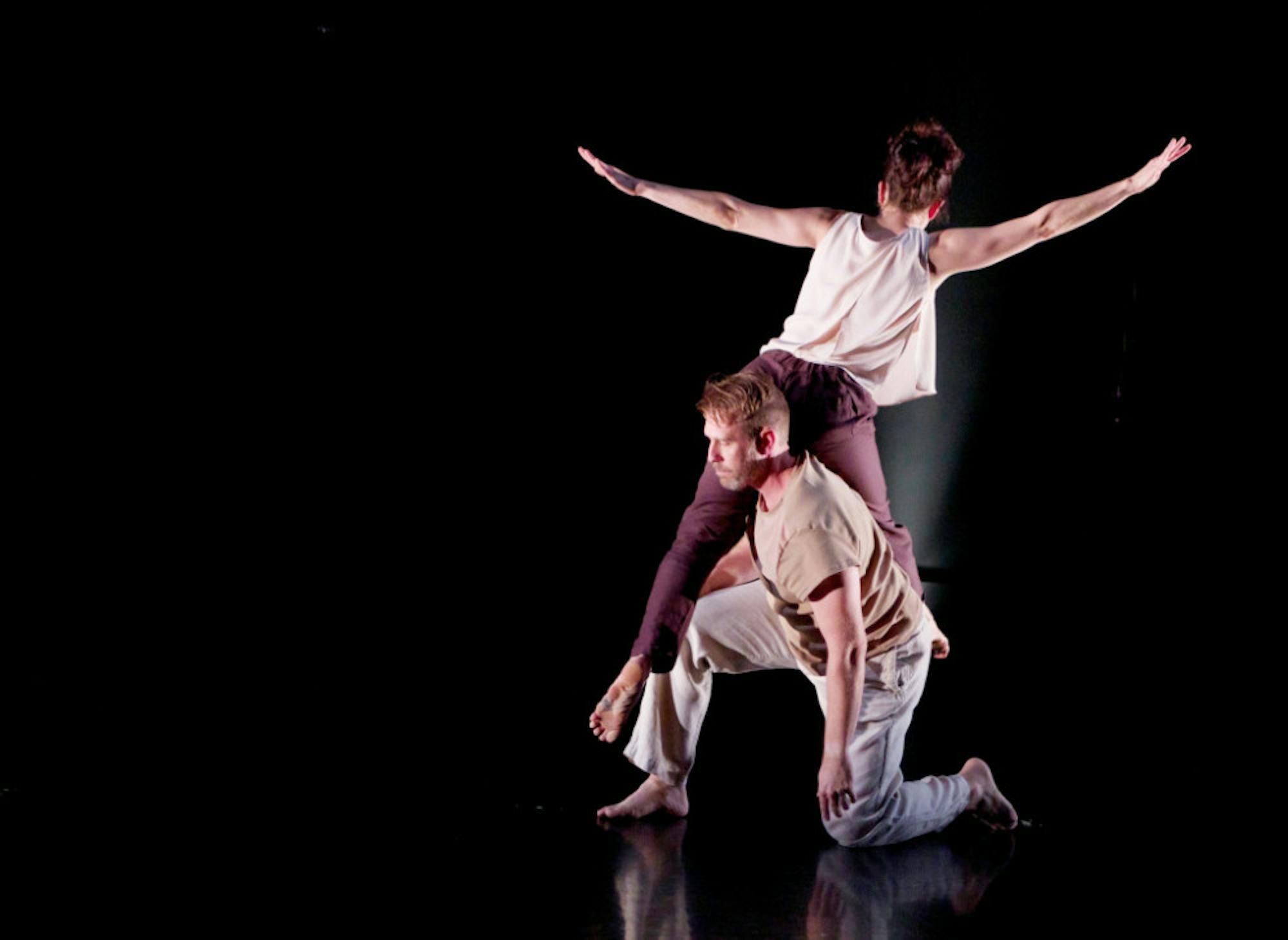
There are four main elements of dance: body, energy, space and time. Emory Dance Professor Gregory Catellier has spent the past three years exploring each of these qualities in depth, and this weekend, he unveiled the last installment of the series: a show dedicated entirely to the body.
"Corpus Mysteriis," which ran from Sept. 18 - 20 in the Schwartz Center for the Performing Arts' Dance Studio, was a testament to the multitude of ways that dancers, movers and people in general interact with their bodies. And though a vital part of our everyday existence, this may well have been the vaguest topic that Catellier had to explore.
He previously investigated time in 2011's "Tempo," took the audience on a trip to space in "The Final Frontier" and addressed every kind of energy imaginable in last year's "E." But body is so inherent in dance of any sort that it seemed Catellier had saved the most challenging topic for last.
So instead of trying to make the show a tribute to the body, Catellier delved into what happens when the body breaks down.
And what was most refreshing about Catellier's choreography in that topic was that he never took anything too seriously. He made fun of himself, of his dancers and of dance in general, which was a great and lighthearted change of pace from the traditional concert dance experience.
In one moment, a dancer broke down on the floor, complaining that she had hurt her knee. Catellier came over to her and placed his hands on her knee, before she reminded him that it was the other knee that had been injured.
"I know," Catellier assured her. "See, it's all connected."
"Corpus Mysteriis" kicked off with a section entitled "Corpus Fracta," entirely dedicated to injuries and the ways that the body can turn against its owner. There was hardly any traditional dancing in the section, but the stories that the performers told were so entertaining that no one seemed to mind much.
The most conventionally "dance" section followed, entitled "Cepi Corpus Cepi Choros." The performance featured a total of six dancers, but it was most intriguing in the hands of Catellier and Emory dance instructor Kristin O'Neal. The pair is truly superb together, as it's clear that they're extremely comfortable dancing with one another. Whether they were watching over the other dancers like proud parents or rolling over each other's backs, it was genuinely hypnotic to witness.
When all the dancers performed together, though, "Corpus Mysteriis" seemed to shift from the experience of the individual to a more universal mindset. The six performers assisted, rejected, supported, pushed and cradled one another – never establishing a clear relationship, but rather expressing all the different concepts that one body can convey.
In one particularly memorable moment, dancer Corian Ellisor laid on the floor motionless, seemingly dead.
The other dancers surrounded him, but the audience couldn't quite tell if they were protecting him or mourning him. And in an instant, Ellisor shot up to sitting, gasping for air. The scenario playing out was as uncertain as it was transpiring, but in the aftermath, it seemed that his friends had been healing him.
It was moments like that which gave "Corpus Mysteriis" its humanity.
The performance alternated between that kind of tenderness and a lighthearted absurdity, which Catellier somehow fit together in a way that seemed balanced, but never disjointed.
He managed to explore the many connotations of the "body," including aspects that were good, bad, awkward, graceful, funny and blurry.
Leaving the show, I wasn't entirely sure whether I felt satisfied with all these different explorations or confused at what they had meant.
But for a show all about the body, it should have been obvious: it wasn't about what it had meant. It was just about experiencing a feeling. It can be hard to turn off the search for meaning and just feel, but that appeared to have been the whole point of the show.
And on that front, Catellier definitely succeeded.
– By Emelia Fredlick, Arts and Entertainment Editor



